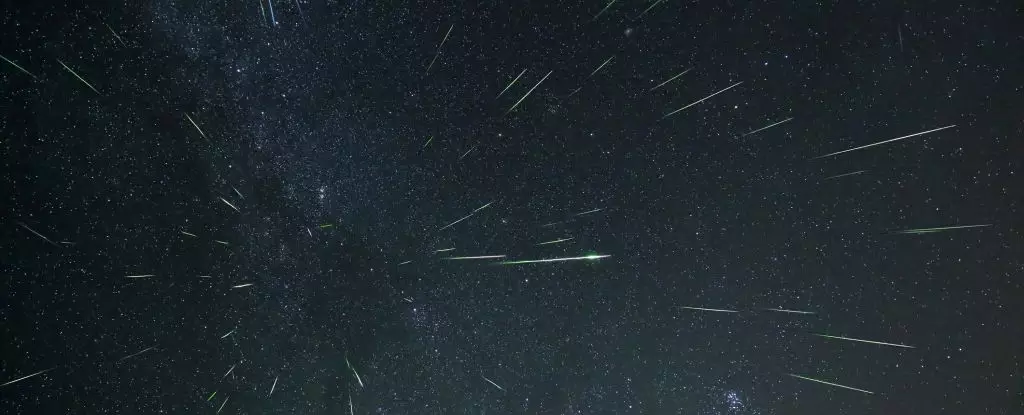As spring unfurls its vibrant colors, the night sky becomes a canvas for some of the most mesmerizing celestial events of the year. Mark your calendars for April 17 through April 26, as the Lyrid meteor shower graces our skies, followed shortly by the Eta Aquariids from April 20 until May 21. While these meteor showers have their nuances, one thing remains certain: they offer an unparalleled experience for both avid stargazers and casual observers alike. With no special equipment needed, these celestial spectacles require only an open sky, a cozy blanket, and your curiosity.
Understanding Meteor Showers
Meteor showers are a result of our planet traversing trails of debris shed by comets and asteroids. As Earth journeys around the Sun, it enters these streams, leading to striking displays of light as small particles burn up upon entering our atmosphere. The best part? These meteor showers are not random occurrences; they happen regularly, making them highly anticipated events for astronomy enthusiasts.
The Lyrid meteor shower, originating from comet C/1861 G1 (Thatcher), has a rich history, with its first recorded observations dating back to 688 BC. This ancient comet, with an orbital period of approximately 422 years, yields a radiant point near the constellation Lyra. Although the Lyrids tend to produce fewer meteors—usually around 10 to 15 per hour during peak visibility—they hold a certain charm with their history and rarity.
Lyrid Shower: Timing and Conditions
This year’s Lyrid peak coincides with a waning Moon, approximately 40 percent illuminated, which means the glow from the moonlight may hinder optimal viewing conditions. East of the Rockies, the best opportunity for a stunning meteor display will likely be on the evening of April 21. Observers should settle in before moonrise to maximize their chances of spotting these ephemeral cosmic wonders.
However, it’s crucial to note that geography plays an essential role in visibility. The Lyrid shower is predominantly observable from the northern hemisphere, and stargazers south of the equator may miss out on much of the action.
The Allure of the Eta Aquariids
From the tail end of April into mid-May, the stage will be set for one of the more robust meteor showers: the Eta Aquariids. This captivating display, produced by the remnants of Halley’s Comet, which orbits roughly every 76 years, brings forth an astonishing sight for those situated in the southern hemisphere. With the potential for 50 to 60 meteors an hour, the Eta Aquariids promise a spectacular light show that shouldn’t be underestimated.
For northern hemisphere viewers, the experience may not be as abundant, but with luck on your side, approximately 20 meteors per hour might still grace the skies overhead. This cosmic ballet will showcase the radiant point near the constellation Aquarius, providing an exciting diversion from the ordinary night sky.
Strategies for Optimal Viewing
As you prepare for these celestial marvels, selecting a suitable viewing location makes a significant difference. Opt for spaces away from city lights, where the night sky is less obstructed by artificial glow. Lay back on comfortable cushions or a sleeping bag, allowing your eyes to adjust to the dark expanse above.
It’s helpful to give yourself enough time to simply relax and absorb the experience of watching the heavenly dance unfold. Patience is key, as meteors can be sporadic, but their brilliance will reward those attentive enough to witness them.
Additionally, resources like Time and Date can assist in pinpointing the best viewing sessions based on your geographical location, ensuring you make the most of these remarkable astronomical occurrences.
As we transition into this enchanting period, the promise of breathtaking cosmic displays fills the air with excitement. Venture out into the brisk spring nights and let the wonders of the universe inspire awe, spark imagination, and ignite a sense of connection to the vast cosmos. While no two meteor showers are precisely alike, the seamless blend of history, science, and ethereal beauty encapsulates the allure of stargazing.


Leave a Reply